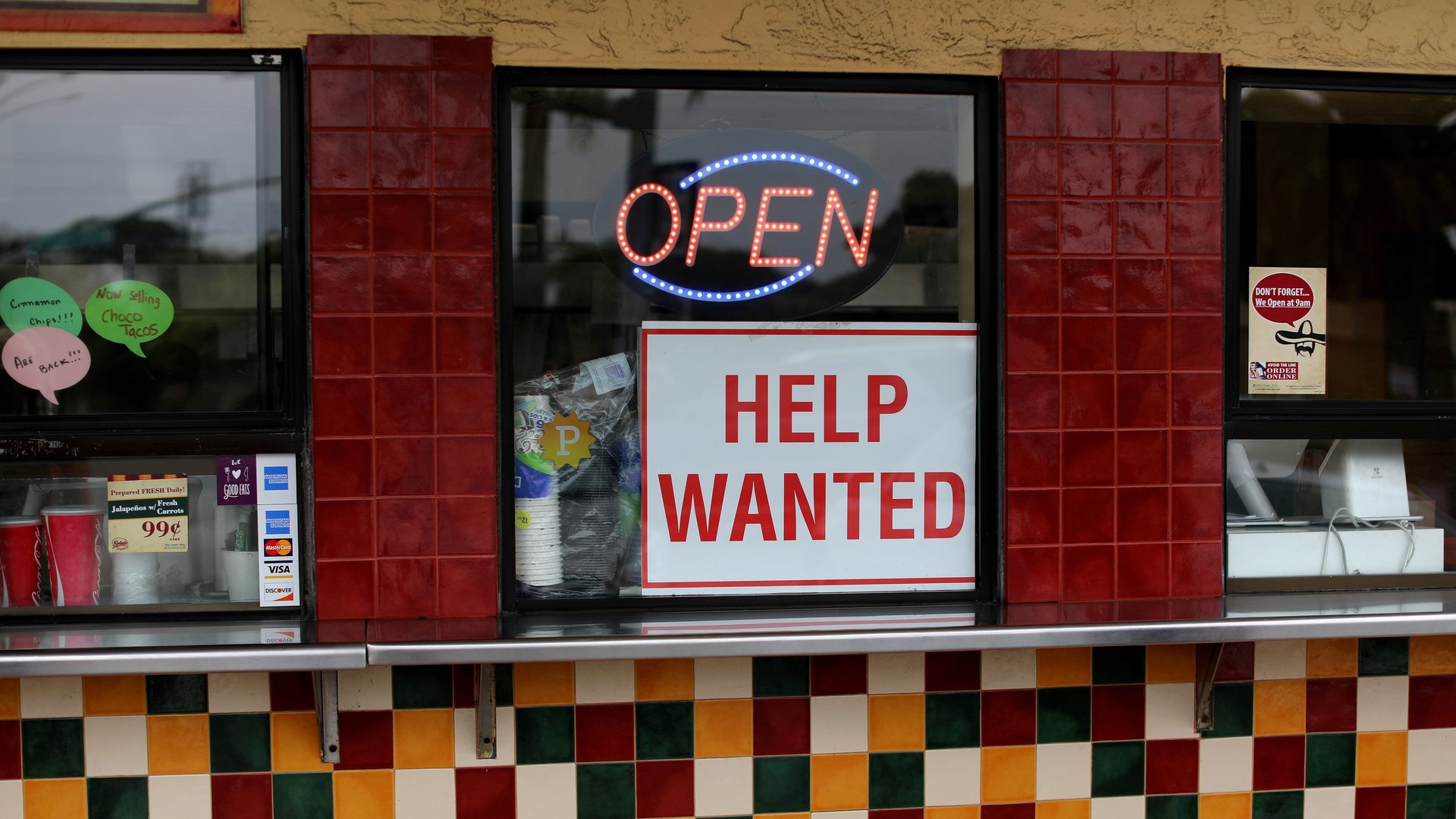What economists are looking for in the September US jobs report
The US economy added far fewer jobs than economists expected in August. Experts will be watching the employment report on Friday (Oct. 8) for clues as to whether that surprise was a blip or a sign of a deeper fracture in the job market.


The US economy added far fewer jobs than economists expected in August. Experts will be watching the employment report on Friday (Oct. 8) for clues as to whether that surprise was a blip or a sign of a deeper fracture in the job market.
Economists surveyed by FactSet forecast the US added 500,000 jobs in September. That would be a sharp uptick from the previous month when employment rose by 235,000, according to provisional data from the Bureau of Labor Statistics, well below the 700,000 or so jobs that were expected.
Economists still predict perky job growth. But another miss or two could force policymakers to do a major rethink and cause them to wait longer to raise borrowing costs, said Kathy Jones, chief fixed-income strategist at the Schwab Center for Financial Research. If the economy is adding fewer than 300,000 jobs per month, that’s not the kind of steady growth that will quickly restore all the employment that was lost at the outset of the Covid-19 pandemic. (Schwab is forecasting about 400,000 new jobs were created in September.)
What is happening to the labor participation rate?
The job market is being buffeted by a range of factors: A surge in Covid infections in August likely pushed some workers away from jobs that are riskier, like serving food, retail, and hospitality. Those workers, meanwhile, may have found employment in other sectors that have grown during the pandemic, such as warehouses for e-commerce, making it difficult (and more expensive) for restaurants and retailers to get those employees back.
The labor participation rate—people who don’t have jobs and aren’t actively looking for work—will be an important data point in this week’s job report, said Sal Guatieri, senior economist at BMO Capital Markets in Toronto. “The participation rate has basically stalled at relatively low levels for the past year,” he said. “Some people are just reluctant to get back into the workforce.”
Some people, particularly women, are staying out of the job market to look after children amid a shortage in childcare. “Child care is a huge issue,” Jones said. The participation rate of women, particularly those whose ages suggest they may be looking after younger children, has lagged behind. Now that many schools have re-opened, Jones expects to see more women going back into the job market.
The relatively high level of workers staying off the payrolls suggests there may be more slack in the employment market than the soaring number of people quitting jobs and record employment vacancies would suggest. Guatieri said he’s looking for signs that a robust job market begins pulling people back out of retirement.
Why employers are having trouble finding workers
Employers say it has gotten much more difficult to find workers. The job market has long suffered from a mismatch between the types of skills employers want and the skills workers actually have. The worker shortfall has been exacerbated by a large swath of employees who have taken early retirement, perhaps in part because stock and housing markets have rallied, pumping up the value of retirement wealth. Investors and analysts are divided on whether extra unemployment benefits, which have now expired, gave jobless people an incentive to stay on the sidelines of the job market.
“Companies are just finding a hard time matching positions with candidates,” Guatieri said. The US unemployment rate is forecast to have fallen to 5.1% in September from 5.2% the previous month, according to FactSet. Unemployment peaked at a high of 14.8% during the pandemic in April 2020.
Immigration, which has been slowing for a decade, has also put a brake on the supply of workers, said Jim Diffley, chief economist at information provider IHS Markit. “The labor force is growing more slowly than it had before,” he said.
Wages are rising in 2021
As businesses struggle to find workers, employees’ average hourly earnings jumped 0.6% in August from the previous month, about twice what had been forecast. That figure was up 4.3% from a year ago. In September, economists are predicting another heady increase in pay, rising 0.4% from the previous month and 4.6% from the same time in 2020.
“That does suggest we will see increasing pressure on inflation over the next year, and that pressure will build as the unemployment rate continues to decline,” Guatieri said. “The big wildcard and unknown is how much of that increase in wages businesses will be able to pass along to consumers.”
Why are there so many jobs and such high unemployment?
The federal government’s extra unemployment benefits expired on Sept. 6, leaving more than 7 million people without that extra support, which was meant to help workers withstand the pandemic downturn. Nationally, some 37% of workers would make more money with unemployment benefits (with the Biden administration’s supplement of $300 per month) than at their prior jobs, according to estimates from the American Action Forum.
Even so, states that ended that support early have had about the same job growth as states that kept it, Guatieri said. “That could just mean we need more data,” he said. “Theory might suggest that we will see increased labor-force engagement people who are more actively searching for a job now that they can no longer collect emergency unemployment benefits. So far studies do not suggest evidence that that is the case.”